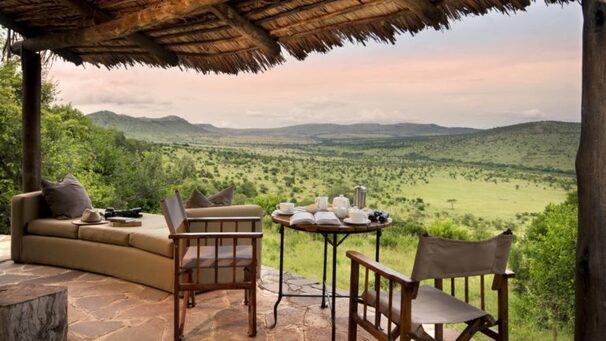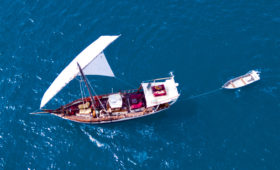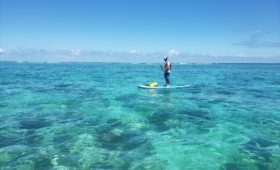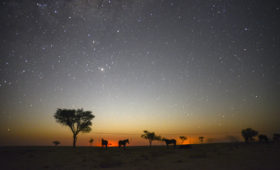There are several reasons why you need to visit the Serengeti National Park. It is one of Tanzania’s – and the world’s – most famous safari destinations. The grasslands of the Serengeti are arguably the most iconic settings for an authentic African Safari.
If you have not heard of the name itself you surely will have seen footage of the Great Migration crossing the plains. Or the crocodiles waiting in ambush at the river crossings. Chances are that this was the Serengeti. There are many reasons to visit the Serengeti for a safari and here we will highlight what we feel are the main reasons you should visit.
An iconic safari destination

Firstly, the Serengeti is a name that evokes awe and wonder for many. Therefore a safari here is on many people’s bucket lists (if it isn’t on yours then trust us it should be!). Named by UNESCO as a World Heritage Site it is a land protected for its outstanding biodiversity, wildlife and history. And considered by many as the best wildlife reserve in Africa. The Serengeti is also the backdrop to the Great Migration. The largest and most well-known migration of large mammals on the planet.
There are countless wildlife documentaries showcasing the Serengeti, it’s lands and wildlife. Many Hollywood films are even set in the wild places that abound in the region. Are you looking for an African adventure that epitomises the iconic safari and makes you feel like the explorers of old? Then a safari in the Serengeti is your best option.
The best place in Africa for wildlife viewing

With regards to wildlife viewing the Serengeti is at the top of the list for Africa (and it’s quite an impressive list to be honest). Approximately 70 large mammal and 500 bird species are found in the diverse habitats. The Big Five can all be found here – lion, leopard, elephant, buffalo and black rhino (although these are rarely spotted). It is a great place for spotting lions because the lion prides of the Serengeti plains are well known for their abundance.
In addition you also have a very strong chance of seeing some of the other large predators like leopard, spotted hyena. Maybe even the the endangered cheetah. Keep your eyes peeled to catch a glimpse of some of the smaller predators like jackals and serval cats. And if you are really lucky you might see the elusive African wild dog.
Lots of predators shows a healthy eco-system because there are many grazing animals for predators to hunt. The grazers you will see are wildebeest, Grant’s gazelle, African buffalo, elephant, warthog, giraffe, waterbuck, topi, zebra, impala and eland. These animals live in harmony in the Serengeti thanks to its incredible biodiversity. As a result each species has adapted to fit its environment.
During a game drive through the Serengeti you will see vast herds of wildebeest and zebra (remember it’s the home to the Great Migration). With the other grazing animals appearing between the herds. With any luck you will then spot the predators at the edges of the herds. Stalking their prey in the hope of a kill, which if you witness is one of mother nature’s most wild experiences

Are you interested in birds? The Serengeti is also a superb destination for bird spotting. There are over 500 bird species in the region and a few species can only be found in Tanzania. For instance the Fischer’s lovebird, grey-breasted spurfowl and rufous-tailed weaver. Other bird species to look for include the kori bustard, secretary bird, usambiro barbet, yellow-throated sandgrouse, grey-crested helmet shrike, and Hildebrant’s starling.
To inspire your adventure planning you can view a variety of Serengeti based safari itineraries here.
The Great Migration

Each year the Serengeti Plains host the world’s most famous and largest terrestrial mammal migration in the world, ‘The Great Migration’. It is such an awesome spectacle that it is considered one of the ‘Seven Natural Wonders of Africa’. USA Today even name it in their ‘New Seven Wonders of the World’. During the migration more than 2 million zebra, wildebeest and gazelles migrate with their recently born calves. They travel from the Serengeti towards the Masai Mara in Kenya in search of fresh grazing grounds.
The migration starts with the calving season, occurring between January and March, depending on the time of the rains. Once the calves are strong enough to travel and the rains end (usually in May), the animals will head northwest into the areas around the Grumeti River, where they typically remain until late June. The iconic and well documented ‘river crossings’ occur in July as the herds cross the Grumeti and Mara rivers. The crocodiles gather in the rivers in anticipation for their next meal. This activity is a very popular tourist attraction and is on many bucket lists.

The great migration is an awesome spectacle to behold so plan your trip in order to witness it. However, expect the park to be busy. To avoid the crowds there are other areas and times of the year to witness part of the migration. No matter when you visit the Serengeti, we guarantee that you will be blown away by the immense vistas, vast herds and diverse wildlife. The Serengeti is a once in a lifetime destination that we highly recommend you visit.
Spectacular scenery

An impressive and vast expanse of open plains and acacia woodlands. The name Serengeti signifies ‘endless plains’ in the Maasai language, and this place definitely does justice to its name. The Serengeti area covers approximately 30,000 km2 (12,000 sq. mi), spreading from northern Tanzania through to southwest Kenya. The protected area within the region includes the Serengeti National Park and several other world-renowned game reserves.

A variety of habitats can be found as you journey through the Serengeti. Including grasslands, woodlands, kopjes, riverine forests and swamps. The southeast consists mainly of shortgrass treeless plains but has rich soils due to the previous eruptions of the now extinct volcano Ol Doinyo Lengai. The plains are punctuated by granite and gneiss outcroppings known as kopjes. These were also caused by volcanic activity. The Kopjes provide a microhabitat for non-plains wildlife and are well worth a closer look to see just how important they are in the overall environment.
As you head towards the north / west the grasses get longer and to the west you will find acacia woodlands around the Lake Victoria area. 16 acacia species can be found through these areas. Old lakebeds in the Lake Victoria area have now become flood plains and create marshlands punctuated by rocky outcrops. Far to the northwest you will find further changes as this area gets the most amount of rainfall. Allowing for broad-leaf deciduous forests to grow, providing a stark contrast to the wide-open plains of the south.
Amazing activities

Obviously, game drives are the top of the list when it comes to activities to do in the Serengeti. However, there are many more activities to choose from and some you may not have even thought were possible. For example, have you ever thought about experiencing the wildlife and views from up high, where the eagles soar? The Serengeti Plains are, in our opinion, one of the world’s best settings for a hot air balloon flight.
Balloon flights start early, with the balloon being inflated while you enjoy the beauty of the African sunrise. Board and lift off and you will realise just how much wildlife surrounds you on the plains. Rising along with the sun, your balloon floats in whatever direction the winds of the day are blowing. You will marvel at the timeless cycle of life and death as it unfolds right below you, safely tucked away in your basket suspended in the sky. This truly is an experience like no other.

Luxury accommodation and lodges

You may think that on a safari in the Serengeti you would be roughing it, but you couldn’t be further from the truth. The Serengeti offers some of the most luxurious accommodation options which you wouldn’t believe possible in such a location. Choose from mobile tented camps, permanent tented camps or lodges, or why not a combination of all of them.
The most basic of all options is the mobile tented camps which are seasonal camps and move every few months. They sometimes even follow the migration of certain animals. These camps allow you a great sense of freedom and are well worth spending a few nights in at least. They are very comfortable camps, but they do lack AC, mains electric and in some cases running water. Are happy to trade those little luxuries in for front row seats to nature right from your camp? Then go for it.

If you can’t rough it but still want a more authentic camping experience, then a permanent tented camp is perfect for you. These are often large safari tents built on permanent platforms, well furnished and as comfortable as a modern hotel. You get the same luxuries as anywhere, with the benefit of an abundance of wildlife on your doorstep. Permanent tented camps are our preferred choice when it comes to accommodation. They allow you to enjoy a luxurious and yet adventurous safari with amazing service in a spectacular bush setting.
Do you feel the need to have four solid walls around you and a proper roof above? It is possible to also get lodge accommodation in the Serengeti. There are limited lodges available inside the park but among these there are some remarkable options. Some are even complete with spas, recreational facilities and swimming pools. These lodges truly are a sight to behold and some of the most luxuriant buildings in Africa. A stay in one of these high-end lodges could well be the highlight of your trip.
Click here for an example of a luxurious itinerary in the Serengeti that will leave you breathless.
Culture and tradition

It may seem strange to include human interaction in a list of reasons to visit a wildlife region. However, once you meet the Maasai people you will know why we have included this point. Forever smiling and always welcoming, the Maasai are the ever-present sentries who protect this ancient land. The Maasai have lived in this region for countless years. They still play a huge role in the land and wildlife management today. The Serengeti is sometimes referred to as ‘Maasailand’ after this warrior tribe who live alongside the wild animals.
On safari you will likely meet several Maasai as they are often employed as trackers, guides and watchmen. To get a better understanding of the Maasai culture book a visit to an authentic Maasai village. You will witness the life, ceremonies, dances, traditions and much more, immersing yourself into their ancient customs.
Geographical setting

The geographical location of the Serengeti may also seem a strange point to include as a reason to visit. However, it really it is quite simple and comes down to two key reasons. 1. -The Serengeti is extremely easy to travel to. 2. – Once you are there you have a variety of other amazing locations and activities available to you nearby.
Several large airports are located nearby, including Dar es Salaam, Kilimanjaro and Zanzibar. Therefore many flight options are open to international visitors. Several domestic flight companies run daily services to airstrips dotted around the Serengeti region. Flight times are short, between 30 minutes and 1.5 hours. And stunning views are on offer as you fly over the plains. You can even opt for a safari operator that collects you in Arusha and drives you overland to the Serengeti. Giving you the chance of a lengthy game drive all the way to the park.

Once you are in the region there are some amazing options for you to look at nearby. Check out the Ngorongoro Crater, also known as ‘Africa’s Garden of Eden’. A spectacular landscape with unparalleled wildlife viewing options and only a short drive away. Visit some of the country’s other excellent national parks and game reserves. These include Ruaha, Selous, Katavi, Manyara, Tarangire, Mikumi and Mahale. The country has an impressive selection of game viewing options, with something to please everyone. Click here for some further ideas.
To explore the nearby towns of Moshi and Arusha there are plenty of day trip options. Treks to nearby waterfalls, coffee plantation visits and cultural interactions. Trips to Mount Kilimanjaro are also based out of these two towns. If you plan to scale the mountain, walk along the foothills or just simply gaze up at it you will be stunned by its serene majesty.

Check our previous blog, the Top 10 Reasons to Visit Tanzania, for more options available in the area. You will see that a safari trip in the Serengeti is the trip of a lifetime. It offers some of the world’s best game viewing in a stunning location. And you can include many more fantastic activities and locations. This is why you need to visit the Serengeti and experience your African adventure.




